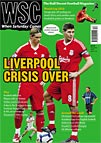 Gary Howard looks back at the 1949-50 Division Two season
Gary Howard looks back at the 1949-50 Division Two season
The long-term significance
The post-war boom in football attendances reached a peak in 1949-50. On December 27, 1949, a record aggregate of 1,272,155 spectators watched the 44 League games, an average of 28,193. Even a rail strike in London didn’t hamper fans’ enthusiasm – 100 Brentford fans hired aeroplanes to take them to Hull. Second Division Tottenham were the best-supported team in the country, a feat achieved only once since, by Manchester United in 1974-75. Spurs went on to win the League title the next season. They quickly declined after that, but were revived in the late 1950s under the management of Bill Nicholson who had been a wing-half in their back-to-back title winning teams of 1949-51.
Story of the season
Former Spurs centre-half Arthur Rowe returned to the club as manager from non-League Chelmsford City in April 1949. With only one addition to the team he inherited – Southampton right-back Alf Ramsey – Rowe forged a playing style based around possession and short passing that came to be known as “push and run”. Spurs were to lose just once in their first 25 matches during which they beat promotion rivals Sheffield United 7-0. Having topped the table for the entire season, they clinched the title with six games to spare following a 0-0 home draw against Hull in early April. Goals were spread around the team, left-winger Les Medley being top scorer with 18, two ahead of centre-forward Len Duquemin, the first Channel Islander to make a major impact in League football. Spurs had four players, more than any other club, selected for England’s 1950 World Cup finals squad in Brazil, with Nicholson and Ramsey joined by goalkeeper Ted Ditchburn and inside-forward Eddie Baily. Runners-up Sheffield Wednesday stumbled on the run-in, drawing three of their last four while their city rivals made a late charge. Wednesday were promoted on goal average; under today’s goal difference system the sides would have been level with United going up having scored more. Wednesday survived the loss of inside-forward Eddie Quigley, surprisingly sold to Preston after scoring ten times in as many games. In his absence goals were provided by the superbly named strike duo of Clarrie Jordan and Redfern Froggatt. Southampton got most of their goals from the partnership of Charlie Wayman and Ted Bates. The latter took over as manager five years later and led them into Division One for the first time in 1965-66. The Saints were unbeaten in the final nine games but dropped what turned out to be a vital point at Plymouth in the 40th match. Plymouth went down with two games left and were joined by Bradford PA who lost their last four.
For the record books
Spurs’ average crowd was 54,111, some 5,000 ahead of the League’s next most popular team, Arsenal. Of the 22 Division Two clubs, 15 averaged 20,000 or more. Tommy Briggs of Grimsby was the division’s top scorer with 36 goals. Grimsby’s 7-2 defeat of Barnsley was the highest aggregate score.
Same place today
Nine of these clubs are in the Championship in 2009-10. Swansea changed from “Town” to “City” in 1970.
Moved furthest away
Spurs have spent all but one season since at the top level. Chesterfield were relegated from Division Two in 1950-51 and have played all of the subsequent 59 seasons in the lower divisions. Luton are in the Conference, Bradford PA in the Northern Premier League.
Went on to greater things
Alf Ramsey ~ The future World Cup-winning manager retired as a player in 1955 to begin his management career with Ipswich. He won the League at Portman Road in 1962 before taking the England job.
John Charles ~ Leeds’ 19-year-old Welsh centre-half (right) later switched to centre-forward and spent five years with Juventus.
Linesmen ~ Unlike referees they were officially anonymous until 1950. Thereafter they were allowed to have their names and the colour of their flags listed in matchday programmes.
Disappearing from view
Raich Carter ~ Hull City were the second most popular visiting team thanks largely to their flamboyant 36-year-old England forward (right), who retired two years later.
Bradford Park Avenue ~ This was their final season at the second level. They folded in 1974, five years after being voted out of the League, but were re-formed in 1989.
Major Frank Buckley ~ An innovative Wolves manager in the 1930s, Buckley was winding down his career at Leeds. He acquired his rank in the 17th Middlesex Regiment, known as ‘The Football Battalion’, in the First World War.
From WSC 274 December 2009